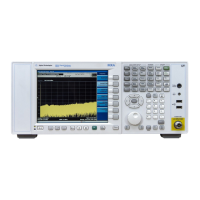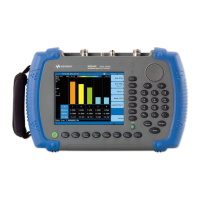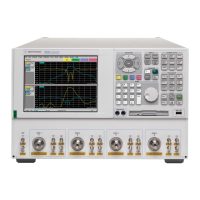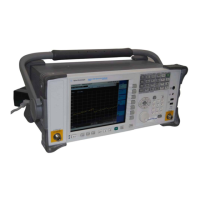100 Chapter 14
Baseband I/Q Inputs (Option BBA) Measurement Concepts
What are Baseband I/Q Inputs?
What are Baseband I/Q Inputs?
Option BBA consists of a Baseband Input module, four input
connectors, and a calibration output connector. The connectors are at
the left side of the front panel. The two ports labeled “I” and “Q” are the
“unbalanced” inputs.
An unbalanced or “single-ended” baseband measurement of an I or Q
signal is made using a probe connected to the I or Q connector. A
simultaneous I/Q unbalanced single-ended measurement may be made
using two probes connected to the I and Q input connectors.
If “balanced” signals are available, they may be used to make a more
accurate measurement. Balanced signals are signals present in two
separate conductors, are symmetrical about ground, and are opposite in
polarity, or out of phase by 180 degrees.
Measurements using balanced signals can have a higher signal to noise
ratio resulting in improved accuracy. Noise coupled into each conductor
equally in a “common mode” to both signals may be separated from the
signal. The measure of this separation is “common-mode rejection”.
To make a balanced measurement, the two connectors labeled “I” and
“Q” are used in conjunction with the I and Q inputs. The terms “I-bar”
and “Q-bar” may be applied to the signals, as well as the inputs
themselves. Probes (customer provided) must be used to input balanced
baseband I/Q signals. This may be referred to as a balanced
measurement.
Balanced baseband measurements are made using the I and connectors
for I only signal measurements, while the Q and connectors are used for
a Q only signal measurement. Balanced measurements of I/Q require
differential probe connections to all four input connectors. For details of
probe selection and use, refer to “Selecting Input Probes for Baseband
Measurements” on page 104.

